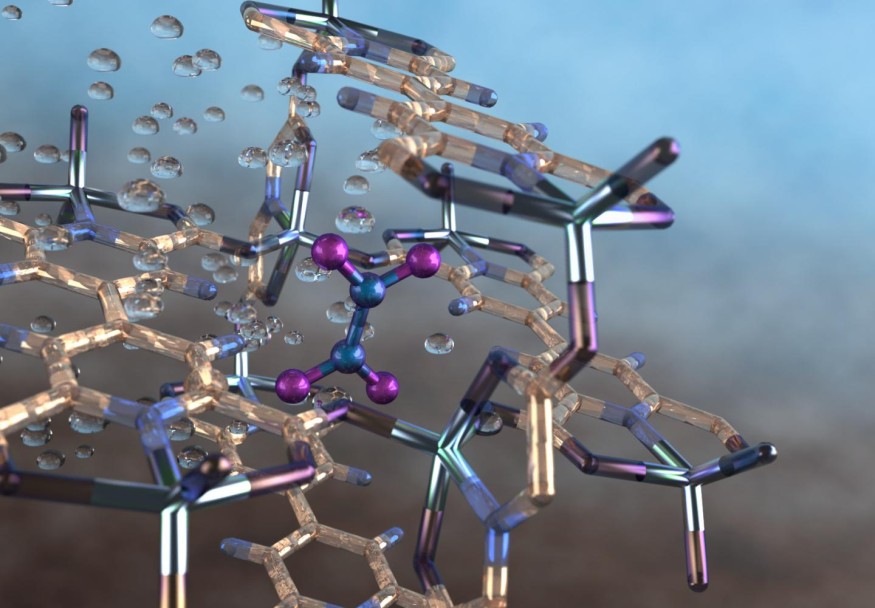Modern agriculture confronts two primary challenges: producing enough food to support an ever-increasing human population while minimizing the environmental harm associated with intensive farming.
According to new research published in the Proceedings of National Academy of Sciences (PNAS), one crucial strategy to solve these concerns is to keep more nitrogen in the soil as ammonium.

Nitrogen Fertilizers

Nitrogen fertilizers contribute significantly to greenhouse gas emissions, air pollution, and water pollution today, but they are also required for agricultural production. While it is vital to reduce pollution, nitrogen usage is anticipated to increase as food production rises. Simultaneously, the world's human population is growing, and agriculture must efficiently provide enough food to feed everyone without removing additional forest for agriculture.
Modern Farmers

Farmers have improved food production in the past by applying more nitrogen fertilizers to their farmlands, but this is no longer a realistic or acceptable approach. According to the experts, farmers could instead explore using a mixture of nitrate and ammonium, which can reduce pollution while still increasing crop yield. Ammonium, a kind of nitrogen, binds to soil and hence has a lower likelihood of leaching into waterways.
"Present fertilizer methods are polluting, inefficient, and harmful to ecosystem health," said Guntur Subbarao, a senior researcher at the Japan International Research Center for Agricultural Sciences and one of the paper's co-authors (JIRCAS). "If farming can move away from only depending on nitrate in soils and toward a system that incorporates both nitrate and ammonium, it might have far-reaching implications in terms of reducing nitrogen pollution while increasing crop yields."
"New tools for maintaining more existing soil nitrogen in the form of ammonium could also enable crop varieties to achieve higher yields through a blend of nitrogen forms," said co-author Tim Searchinger, a senior research scholar at Princeton University's School of Public and International Affairs Center for Policy Research on Energy and the Environment. "A double-benefit lies in the promise of reducing nitrogen pollution, including greenhouse gas emissions, while also assisting the world in saving forests by producing significantly more food on the same area."
Related Article : Global Farm Productivity Declining as Temperature Spikes Up Rapidly
Nitrogen Pollution

The majority of nitrogen pollution mitigation solutions depend on controlling contamination at the "front end" by applying fertilizer more precisely. However, the authors point out that nitrogen loss occurs at the "back end no matter how meticulously fertilizer is administered." Because soil nitrogen in croplands quickly converts to nitrate, a type of nitrogen that easily leaches into groundwater and streams and breaks down to create nitrous oxide, a potent greenhouse gas, this leakage happens.
Ammonium

This is when ammonium enters the picture, according to the authors. It will not decompose into nitrous oxide unless it is first converted to nitrate. While excessive quantities of ammonium are poisonous to most plants, a little-known line of study has found that a mixture of nitrate and ammonium increases crop yields significantly, up to 50% or more, compared to today's normal soil conditions, which are practically all nitrate.
Until recently, this scholarly conclusion was unimportant since microorganisms in agricultural fields quickly convert nitrogen to nitrate through nitrification. The authors do, however, discover two new approaches to maintain a better nitrogen balance in soils. One option is to employ synthetic nitrification inhibitors in combination with coatings to prevent nitrification for long periods. The other option is to make use of some plants' innate capacity to resist nitrification.
Researchers have lately begun breeding versions of all the major grains, including wheat, to have a plant feature that inhibits microorganisms from turning ammonium into nitrate.
Boosting Food Production

Farmers, scientists, and politicians might successfully boost food production while avoiding environmental damage by producing plants that benefit from ammonium and promote ammonium retention in the soil by suppressing nitrification. Because there is presently no large-scale funding support for these endeavors, the authors urge that more studies be done. They also advocate for policies that shift fertilizer subsidies toward nitrification-inhibiting fertilizer formulations or crop types.
"One of the primary benefits of our study is that once these varieties are developed, all farmers throughout the world should be able to utilize them at no cost and with increased yields," Subbarao added.
For more Agricultural News, don't forget to follow Nature World News!
© 2026 NatureWorldNews.com All rights reserved. Do not reproduce without permission.





